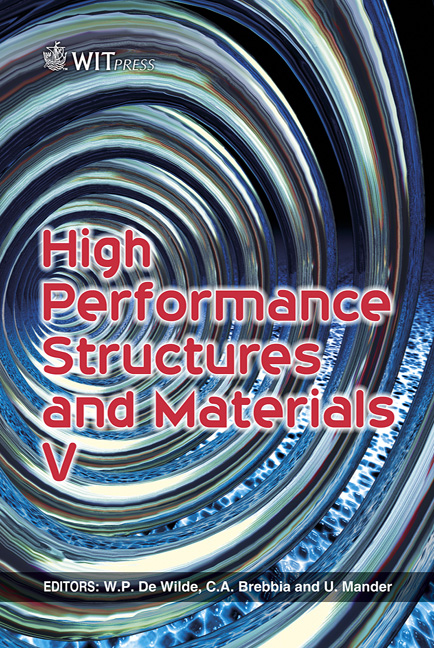A Method For Plaiting Polymer Fibre Around Natural Yarn To Form Composite Fabric
Price
Free (open access)
Transaction
Volume
112
Pages
9
Page Range
187 - 195
Published
2010
Size
1,772 kb
Paper DOI
10.2495/HPSM100181
Copyright
WIT Press
Author(s)
T. Izumi, T. Matsuoka, T. Hirayama, H. Fujita, Y. Miyata & K. Fujii
Abstract
A method has been developed for plaiting polymer fibre around natural yarn using a sawing machine to form a composite fabric. It was tested using polypropylene (PP) fibre and cotton yarn. Investigation of the relationship between the PP weight ratio and the number of PP fibres in the composite fabric revealed that the weight ratio can be easily controlled by adjusting the number of core PP fibres. The developed composite fabric was heat moulded to form fibrereinforced polymer (FRP). Comparison of the stress-strain curve and tensile strength of this FRP with those of FRP made with conventional fabric revealed that, although the tensile strength of the FRP formed using the composite fabric was smaller than that of the conventional FRP, the strain of the developed FRP was larger because of delamination at the PP-cotton yarn interface. The developed FRP was improved by covering its top and bottom surfaces with a thin PP sheet before heat moulding. This prevented stress concentration, resulting in a 30% increase in tensile strength. Use of this FRP formed material using composite fabric is an effective approach to forming composite materials having high strain performance and tensile strength. Keywords: fibre-reinforced composites, composite yarn, polypropylene, cotton, static tensile test, stress-strain curve.
Keywords
fibre-reinforced composites, composite yarn, polypropylene, cotton, static tensile test, stress-strain curve





